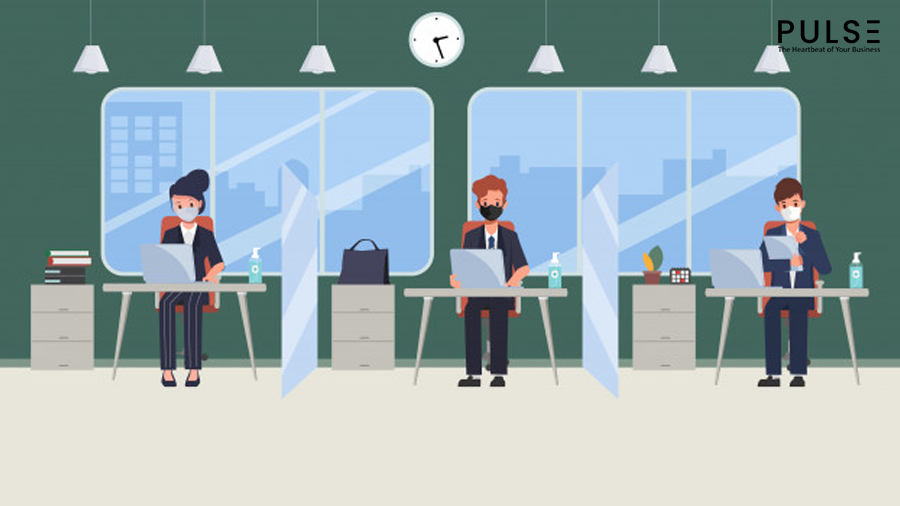The COVID times have brought to fore the unpredictability of life. While daily meetings were a norm in most organisations until a few months ago, the “meetings” have swiftly been replaced by Zoom calls and emails. With 4 to 5 months of self-quarantine, ‘Work from Home’ (WFH) has rapidly turned into ‘Living at Work’. Business mammoths like Google and Twitter have announced WFH for employees till July 2021 and permanently, respectively. Facebook has noted that about 50% of its workforce could work remotely in the coming 5 to 10 years. With these game-changing decisions that are going to shape up the future of work for a large portion of the working population of the world, corporate offices must rethink their office layout.
The New Normal.
A lot of companies have chains of retail stores and outlets, multiple office sites, large buildings in IT parks dedicated to them, service centres distributed across geographies, etc. Now all these office sites will have to be re-imagined and re-designed to fit their work requirements post the Corona period, as most organisations have learnt to operate remotely, thus, saving costs. While traditional offices may hinder the requirements of social distancing, open workspaces might pose to be a bigger threat since the virus is air-borne too. Corporate offices now need to evaluate how much office space they are going to deploy for physical work. Also, they need to set protocols which must be followed to ensure the safety of their staff and meet the Government regulations.
Need for Re-Designing.
It is said that office designs have a direct impact on productivity. Now, companies need to build workspaces according to the norms of social distancing and contactless interaction. Entire office setups, floor plans, conference/ meeting halls, playrooms, gymnasiums, food courts, etc. need to be revamped to accommodate space for a lesser number of people in a larger area. Managements and HRs need to plan departments that are essential to be present in offices and how they may be deployed with full safety measures. They need supervision mechanisms which will check the health of employees, frequent sanitisation of the area, adherence to regulatory guidelines, etc. while minimising the costs that go into following these processes. All these requirements need to be clubbed in the form of a checklist, and each point must be ticked off to create comfortable and safe office layouts for successfully resuming the business. Pulse offers a robust system for managing these requirements.
Pulse is a one-stop solution for all the needs of an office, and offers the following features:
- Standardisation of all office processes with digitisation.
- Standardised Inspection-audit and daily-checks.
- Improving the efficiency of internal processes to save costs.
- Information access to the right/ concerned person- Rights Management System based on the hierarchy of authority.
- Quick turn-around time in both problem identification and problem resolution.
- Central supervision and monitoring- through the Corporate Office.
- Maintaining a Data repository and providing Data security.
- Using AI to analyse the trends and do future planning.
Technology for Corona.
Organisations are turning to technology for the fulfilment of the new safety needs. AI-based systems created on the specific need of individual businesses are being adopted to minimise physical contact between employees while attending office. Some of these systems include:
- Lifts, LED screens, ACs, etc. which can be operated via smartphones.
- Furniture that can be easily moved and cleaned.
- Motion lights and sensory controlled taps in washrooms, other appliances, etc.
- Using furniture of self-cleaning surfaces. They are a class of materials which by virtue of their nature, remove dirt or microbes from their surfaces in various ways.
- Doors and entry/ exit points that are controlled by motion sensors. Face recognition enabled entry for secure or restricted areas.
- Biometric attendance systems registering retina scans from a distance.
Conclusion.
Coronavirus has once again reaffirmed the fact that “Change is the only constant”. People must be on the move to accept the changes which the current times are throwing at us. Similarly, the companies need to plan and design their offices and work procedures in a way that accounts for any new pathogens, calamities, breakouts, or disruptions that may happen in the future.
